
Crystal Catherine Eastman was an American lawyer, antimilitarist, feminist, socialist, and journalist. She was a leader in the fight for women's suffrage, a co-founder and co-editor with her brother Max Eastman of the radical arts and politics magazine The Liberator, co-founder of the Women's International League for Peace and Freedom, and co-founder in 1920 of the American Civil Liberties Union. In 2000, she was inducted into the National Women's Hall of Fame in Seneca Falls, New York.
The War Resisters League (WRL) is the oldest secular pacifist organization in the United States. The organization is celebrating its centennial from the founding date of October 19 into 2024.

Abraham Johannes Muste, usually cited as A. J. Muste, was a Dutch-born American clergyman and political activist. He is best remembered for his work in the labor movement, pacifist movement, antiwar movement, and civil rights movement.
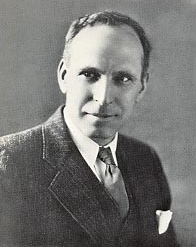
Roger Nash Baldwin was one of the founders of the American Civil Liberties Union (ACLU). He served as executive director of the ACLU until 1950.

Lillian D. Wald was an American nurse, humanitarian and author. She strove for human rights and started American community nursing. She founded the Henry Street Settlement in New York City and was an early advocate for nurses in public schools.
The National Civil Liberties Bureau (NCLB) was an American civil rights organization founded in 1917, dedicated to opposing World War I, and specifically focusing on assisting conscientious objectors.

Opposition to World War I was widespread during the conflict and included socialists, anarchists, syndicalists and Marxists as well as Christian pacifists, anti-colonial nationalists, feminists, intellectuals, and the working class.

The Woman's Peace Party (WPP) was an American pacifist and feminist organization formally established in January 1915 in response to World War I. The organization is remembered as the first American peace organization to make use of direct action tactics such as public demonstration. The Woman's Peace Party became the American section of an international organization known as the International Committee of Women for Permanent Peace later in 1915, a group which later changed its name to the Women's International League for Peace and Freedom.
Walter Nelles was an American lawyer and law professor. Nelles is best remembered as the co-founder and first chief legal counsel of the National Civil Liberties Bureau and its successor, the American Civil Liberties Union. In this connection, Nelles achieved public notice for his legal work on behalf of pacifists charged with violating the Espionage Act during World War I and in other politically charged civil rights and constitutional law cases in later years.
The Women's Peace Society was an organized movement that focused on demilitarization in the United States and iniquity of violence. The Women's Peace Society was an active organization for fourteen years, being founded in 1919 and evolving into a separate peace movement-Women's Peace Union of the Western Hemisphere- in 1933. The Women's Peace Society was created on September 12, 1919, in the United States when a group of women that included Fanny Garrison Villard, Elinor Byrns, Katherine Devereaux Blake, and Caroline Lexow Babcock resigned from the executive committee of the Women's International League for Peace and Freedom because they found "a fundamental lack of unity in the membership as a whole and in the executive committee". The leader of the group, Fanny Garrison, Villard sought to bring importance to humanitarian issues and raise awareness for the importance of all lives after the deadly consequences of World War I.
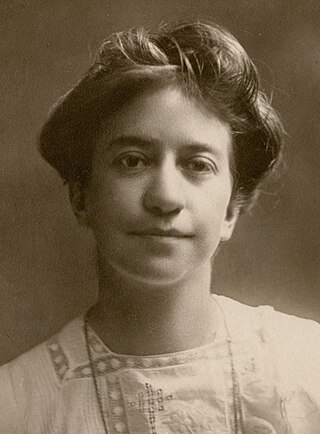
Jessie Wallace Hughan was an American educator, a socialist activist, and a radical pacifist. During her college days she was one of four co-founders of Alpha Omicron Pi, a national fraternity for university women. She also was a founder and the first Secretary of the War Resisters League, established in 1923. For over two decades, she was a perennial candidate for political office on the ticket of the Socialist Party of America in her home state of New York.
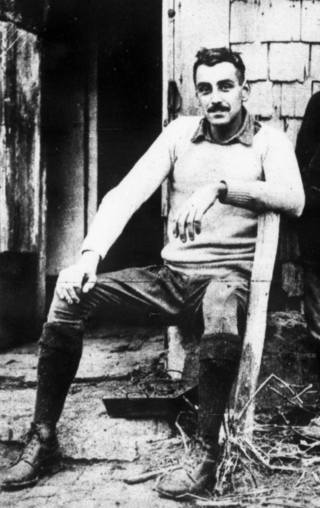
The American Fund for Public Service, commonly known as the Garland Fund, was a philanthropic organization established in 1922 by Charles Garland. The fund, administered by a group of trustees headed by Roger Baldwin of the American Civil Liberties Union, ultimately disbursed some $2 Million to a variety of radical and left wing institutions, including the Federated Press labor news service, the Vanguard Press publishing house, The New Masses magazine, The World Tomorrow magazine, and to the legal defense fund associated with the 1926 Passaic Textile Strike, as well as a host of similar projects. The fund was terminated in 1941.
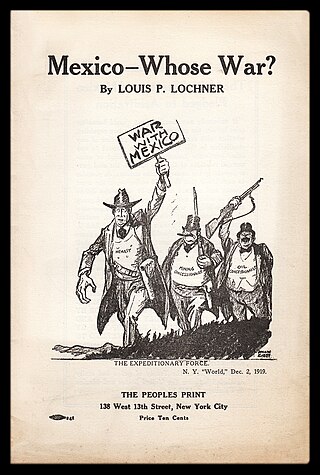
The People's Freedom Union was a left wing American political group which existed from 1919 to 1920. Established as a federation of liberal and radical organizations in New York City, the People's Freedom Union conducted marches in support of political prisoners detained under the Espionage Act during World War I, campaigned for a restoration of American civil rights suspended under the war, and agitated against American intervention in Mexico and Soviet Russia.

The American Alliance for Labor and Democracy was an American political organization established in September 1917 through the initiative of the American Federation of Labor and making use of the resources of the United States government's Committee on Public Information. The group was dedicated to building support among American workers for that nation's participation in World War I in Europe. Following the victory of the Entente powers over the empires of Germany and Austria-Hungary the organization lost its raison d'être. It was finally terminated in November 1919 due to a lack of funding.
The People's Council of America for Democracy and the Terms of Peace, commonly known as the "People's Council," was an American pacifist political organization established in New York City in May 1917. Organized in opposition to the decision of the Woodrow Wilson administration's decision to enter World War I, the People's Council attempted to mobilize American workers and intellectuals against the war effort through publication of literature and the conduct of mass meetings and public demonstrations. The organization's dissident views made it a target of federal, state, and local authorities, who disrupted its meetings and arrested a number of its leading participants under provisions of the Espionage Act. The People's Council was succeeded in 1919 by a new group based in the same New York City headquarters, the People's Freedom Union.
Archibald E. Stevenson was an American attorney and legislative researcher. Stevenson is best remembered for his work as Assistant Counsel of the Lusk Committee of the New York State Senate from 1919 to 1920, the activities of which led to a series of sensational raids and trials of self-professed revolutionary socialists. Stevenson was also the de facto author and editor of the committee's four-volume report, which anticipated congressional investigations of communism conducted in subsequent years.
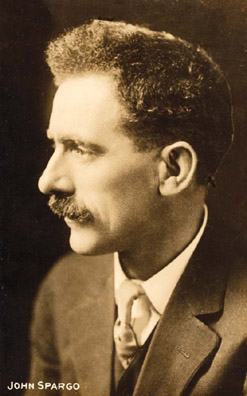
The Social Democratic League of America (SDLA) was a short-lived social-democratic political party established in 1917 by electorally-oriented socialists who favored the participation of the United States in World War I. Led by such intellectuals as John Spargo, Emanuel Haldeman-Julius, and William English Walling, the SDLA maintained effective control over the venerable American socialist newspaper The Appeal to Reason during 1918, the year of the group's greatest public influence.

The Workers Defense Union (WDU) was a legal defense organization in the United States, established in New York City in November 1918 to lend aid in cases involving trade union and radical political activists. The group was organized by Industrial Workers of the World organizer Elizabeth Gurley Flynn, working closely with radical trade unionist Fred Biedenkapp. Both would subsequently become active members of the Workers (Communist) Party of America. The WDU became a local affiliate of the American Civil Liberties Union in 1920, with Flynn joining the National Committee of that organization, before finally dissolving as an independent entity in 1923.

Devere Allen (1891–1955) was an American socialist and pacifist political activist and journalist. Allen is best remembered as the main editor of The World Tomorrow following the departure of Norman Thomas from the magazine in 1922. Allen was the author of more than 20 books and pamphlets and was active in the leadership of a number of political organizations, including the League for Independent Political Action (1928–1932) and the Socialist Party of America.
Madeleine Zabriskie Doty, JD, PhD was an American journalist, pacifist, civil libertarian, and advocate for the rights of prisoners, as well as the International Secretary for the Women's International League for Peace and Freedom.